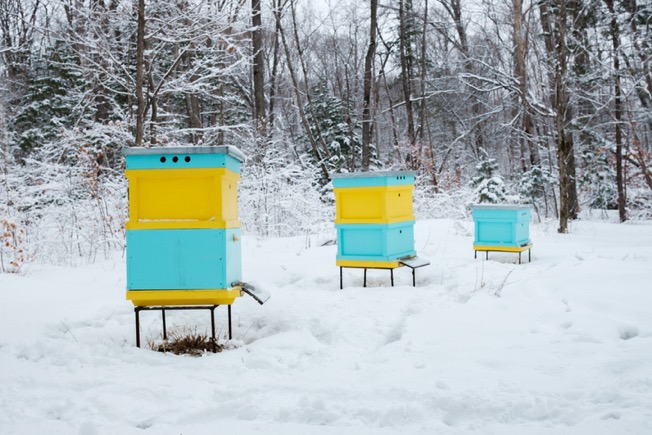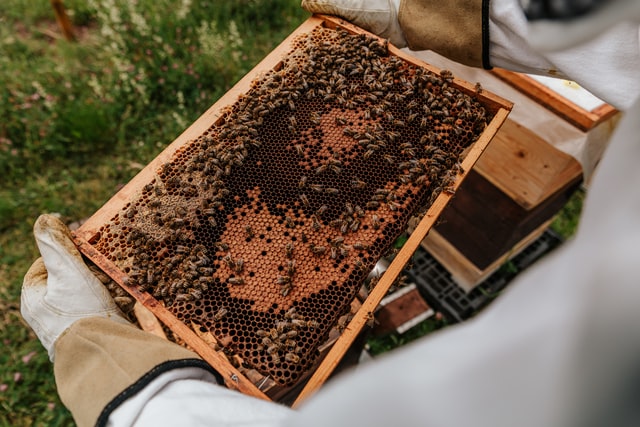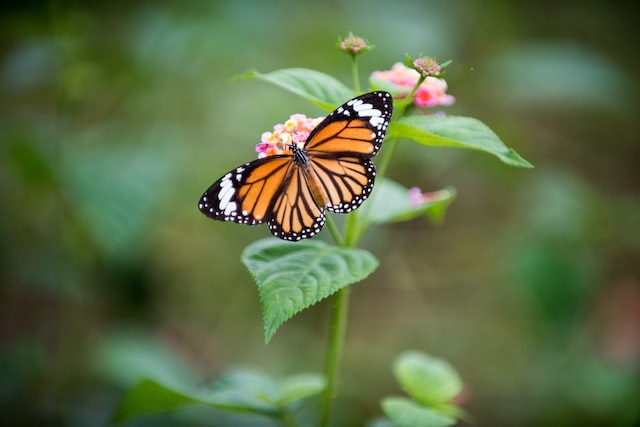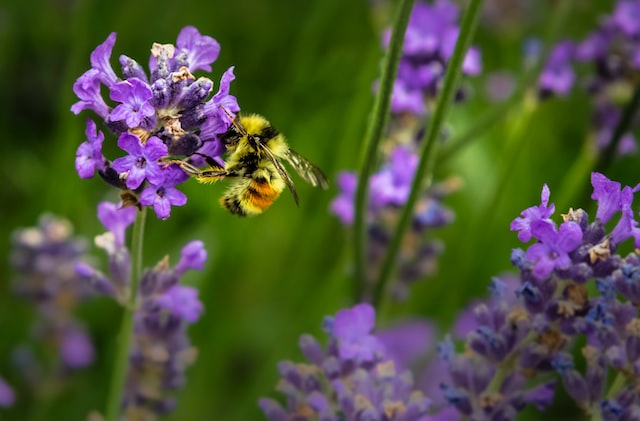You’ve heard lots of buzz recently about the importance of honeybees to our ecosystem. Due to pesticide use and colony collapse disorder, honeybee populations have been declining across the US in recent decades. If you’re a beekeeper, you already appreciate the importance of these friendly critters, and we’re here to help you make sure your hive survives the winter season.
Steps to winter-proof your beehives
Beehives need special attention to survive over the winter months and emerge healthy and productive when temperatures thaw. Below you can find helpful tips on the best ways to help your hive thrive.
Consolidate space
Air is a good insulator, but too much air will mean your hive will need to expend more energy than necessary to keep warm. Overwintering your hives in smaller spaces keeps them safe from pests — like rodents — as well as stay cozy when temps drop.
Keep the honey accessible
Ideally, your hives should be able to move together through their honey stores. Separating them means that they’ll get chillier faster. If you don’t split the honey equally, one group may find themselves farther away from their food source.
Give queen excluders the boot
Your queen needs to stay with the rest of the hive for the colony, and herself, to survive. Removing queen excluders reduces the chance that your queen will become isolated from the rest of the hive during the winter.
Give your bees strength in numbers
When it comes to winterizing your hive, there is strength in numbers. Combining two weaker colonies can give them the numbers to get through the winter and flourish during the following spring and summer months.
Weigh the pros and cons as it comes to your particular hives when deciding if this is the right choice for you. For example, if you combine a weaker hive with a stronger one, you’ll need to ensure the stronger hive has enough honey to support both groups for the winter.
Block the wind
Anyone who’s experienced the icy feeling of whistling winter winds can appreciate how much difference a windbreak can make. Your beehives are no different – fencing in your hives can make all the difference in how well they overwinter.
Insulate your hives
Beekeeping insulation is the key to keeping your honeybees happy and healthy during stretches of frigid weather. Below, we’ll talk about the best ways to insulate your hives.
How to keep your hives toasty warm
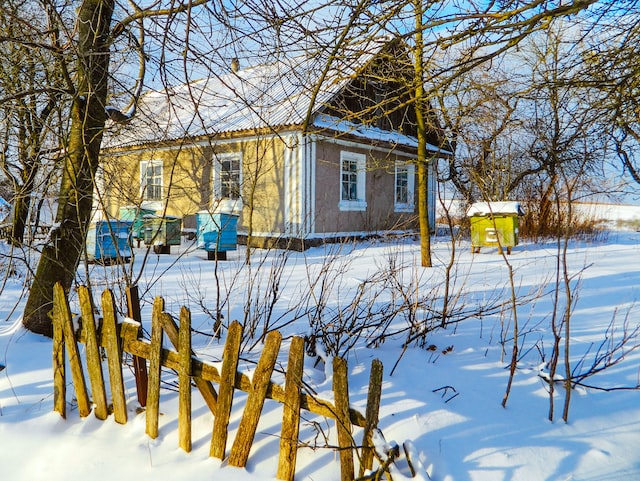
Moisture is the enemy
Water is an essential element for bees, but it can also be their downfall when the mercury dips. Reducing the space your bees have during cold months also goes a long way toward keeping ice and frost out, but it’s not the only factor. Take some time to go over your enclosures before winter, checking for and patching gaps that let in too much moisture.
Box them in
A great way to insulate your hives over the winter is to take a box with a breathable top, place it over your colony, and fill the gaps between the box and your hive with material like straw or burlap.
To wrap or not to wrap?
Wrapping your beehives is beneficial, but you’ll need to ensure they still have adequate airflow. Too much means they’ll be exposed to overly cold air; too little and they won’t get enough air. Wrapping can also trap moisture in – not what we’re hoping for.
Add roofing
Asphalt roofing tiles (especially in a dark color) placed on top of your hives help to retain heat from the sun, giving your honeybees a much-needed boost of warmth during chilly months. Make sure that other sides of your enclosure are breathable if you do this since roofing tiles reduce breathability.
Pro tips

If you’re newer to beekeeping, our pro tips will give you the best chance to support your honeybees through those freezing winter months. With diligence and knowledge, you’ll be on your way to a successful winter season.
Securing hives
Tuck them in for winter – Like chicken coops, feed troughs, or equipment sheds, beehives need to be secured to prevent them from tipping over in powerful winter winds. If your hive tips over in blustery weather, there’s a good chance your hive won’t recover. Take the time to tie down your hives to prevent them from tipping or being knocked over.
Reduce windchill with fencing – One of the best ways to help your bees survive the deep freeze is to put up fencing to ward off windchill. Keeping them safe from freezing windchill will help you in your quest to save the bees. Your fencing doesn’t have to be completely sealed from the wind, but the more of a windbreak you can give your hives, the happier they’ll be.
Bring them in from the cold – If you’re preparing for an especially cold spell, consider bringing your bees in from the elements. If you have the space, you can move them into a barn or outbuilding for the entire winter. If not, a temporary space to shield them from low temps will still help.
Keep pests out
The biggest pest threats to your beehives during the winter are rodents and hornets or yellowjackets. Installing rodent guards late in the summer or early in the fall will help to keep mice and rats out of your hives, which they’ll naturally gravitate to for food and shelter.
Keeping entrances small will help keep hornets and yellowjackets from invading your hives during fall and winter. It’s a good idea to check periodically to make sure that no pests have made your beehives their homes and take steps to remove them without disturbing the hive more than is necessary if you do find unwanted guests.
Protecting other pollinators in your yard
Bees aren’t the only positive pollinators needing help to weather chilly temps. Many other insects beneficial to the environment will overwinter in your yard. Here are a few easy things you can do to lend them a hand.
- Leave the leaves alone. Insects like butterflies and moths need fallen leaves to nest in the winter. This doesn’t mean that you shouldn’t rake your yard, but keeping leaves in a particular place over the winter gives these critters a safe place to stay.
- Keep the disturbance to a dull roar. Many pollinators, including bees, live underground over the winter. Moving perennial plants while giving these beneficial insects safe winter housing is still possible. Just try to keep ground disturbance to less than six inches below the surface.
- Collect cavity nests. Some bee species, like the leafcutter bee, make their homes inside the branches of trees and shrubs. Pruning these limbs in the fall can mean that you accidentally destroy a nest, so if pruning is on your fall maintenance list, check inside the cavities of pruned branches for nests.
- Use that eagle eye. Check under rocks and logs before moving them – lots of helpful insects that break down organic matter and return it to the environment overwinter under stones and logs on the ground.
- Creativity might not be ideal. Certain pollinators choose to make their homes outside of more conventional areas. Avoid ousting them by keeping an eye out for nests inside of things like empty shells or between small rocks.
Bees are a critical element in supporting biodiversity and maintaining healthy environments – not to mention being adorable! Gather all your beekeeping supplies and use these tips and tricks, so you can give your hives the best chance to make it through the winter months and flourish when spring arrives.
